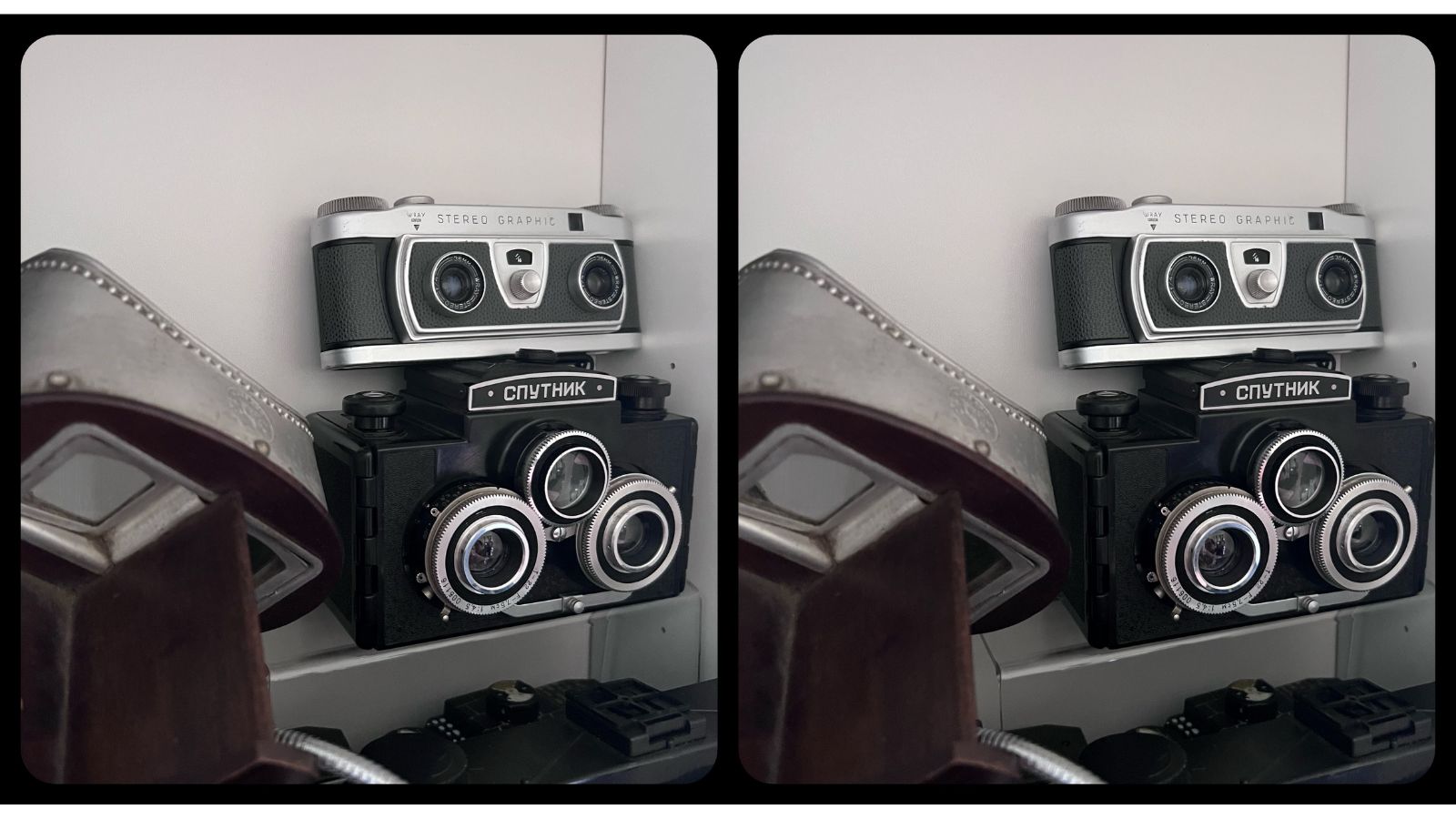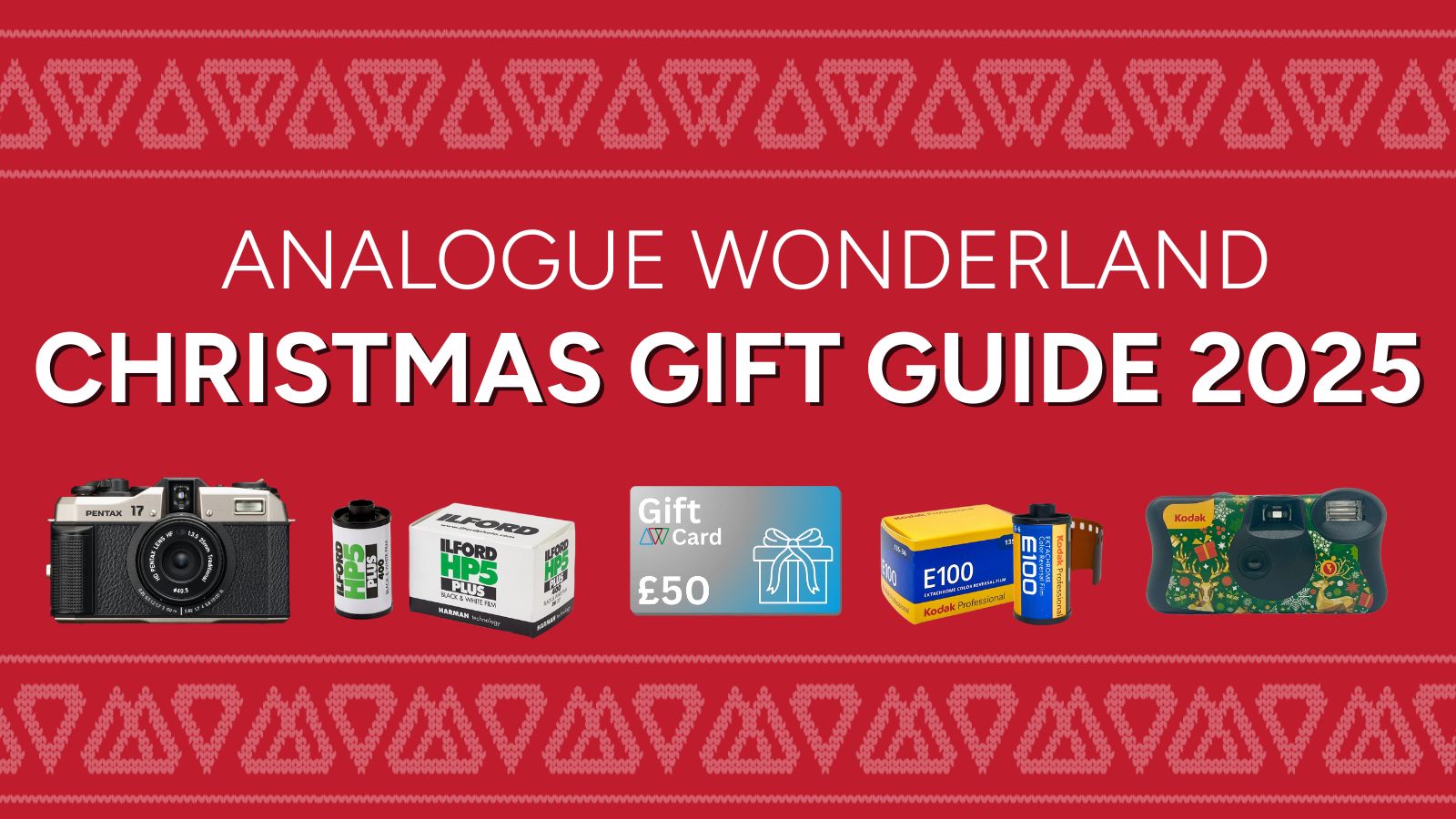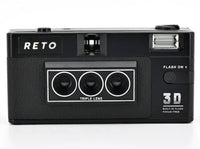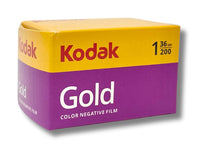Black Friday 2025 has landed at Analogue Wonderland, bringing some of our biggest film photography deals of the year - from discounted film and cameras to money-saving WonderLab processing offers, exclusive bundles, and festive specials available for a limited time only. Grab a great deal while stocks last!
Recent posts

A Glimpse into Stereoscopy: Two Views, One Camera
Stereoscopy, stereoview, stereoscope, lenticular, anaglyph, beam splitter, parallel view, sequential view - these terms might sound like technical jargon, but they all relate to the fascinating world of Stereoscopic photography. If you're intrigued by this unique photographic technique, you're in the right place! In celebration of International Stereoscopy Day on the 21st of June, we asked our resident stereoscopy enthusiast and ambassador, Tom Warland, to share his insights and journey with this creative form of analogue photography. Over to you, Tom!
What is Stereoscopy?
Stereoscopy, first explained by the prominent scientist and inventor Sir Charles Wheatstone in 1838, is the understanding of how we use our eyes to perceive distance and depth. This technique has remained largely unchanged since Wheatstone’s invention of the stereoscope and the development of stereoscopic cameras. The basic principle is still used in modern 3D cinema, echoing the earliest experiments from the Victorian era.

A stereoscopic image captured by Tom in Turkey on a Voigtlander Bessa R2 with Zeiss 50mm f2 lens, fitted with a Beam Splitter and loaded with Kentmere 100 film.
While various types of 3D cameras exist, such as the Reto3D with its three lenses, true stereoscopy relies on just two lenses - one for each eye. This method creates a 3D effect by capturing two photographs spaced about the same distance as our eyes. This spacing can be exaggerated to enhance the 3D effect or reduced for macro photography. When viewed through a stereoscope, each eye sees only one image, and the brain combines them to perceive depth, creating a lifelike three-dimensional scene.

The latest 3D film camera, Reto3D, features three lenses. You might recall its 1980s counterpart, the Nimslo, which had four lenses.
Stereoscopic images are made by taking two photographs spaced about the same distance apart as our eyes. Sometimes this distance is exaggerated to enhance the 3D effect, while for macro photography, the spacing is much closer. When viewed with a stereoscope, each eye sees only one image, and the brain combines them to perceive depth, creating a realistic 3D effect.
To understand this process, try the following steps:
- Hold your finger in front of your face and look at it (you might look a bit silly if you do this in public).
- Close one eye.
- Quickly switch eyes and repeat.
By doing this, you see your finger from the two different perspectives of your eyes. Normally, our brain automatically combines this information to give us depth perception.

Tom's Voigtlander Bessa R2 with Zeiss 50mm f2 lens fitted with a Pentax Beam Splitter.
Getting Started with Stereoscopy
My journey with stereoscopy began with the purchase of some Boer War stereoview prints at a car boot sale. A few years later, I bought my own stereoscope and a stereoscopic camera. These images are interesting on their own, but become really exciting to look at when you get a viewer. I’d suggest trying your luck at a car boot sale or online marketplaces like eBay to get a viewer and some cards. The London Stereoscopic Company offers modern viewers for as little as £5. You might have a View-Master or disks knocking about from when you were a kid!
Once you’ve got what you need, I encourage you to create some examples of your own. If you would like some help, I will be running some stereoscopic workshops in the coming months. To find out more about these events or my stereoscopic work, keep an eye on my website and social media channels - Instagram, Facebook, Twitter.

Tom taking his stereo pinhole Holga out for a spin in the local woods.
How to Create Stereoviews
Making stereoscopic images doesn’t require specialised equipment – any camera will do, including film, digital (yes, the dreaded “D” word, but we all know film is more fun 😉), or even a smartphone. However, it’s worth noting the two types of stereo photograph and the differences in what you need to make each one:
- Parallel View: These images are captured simultaneously. This can be done with two cameras triggered together, a camera with two lenses (such as the iconic Stereo Realist loved by Brian May, a major advocate for stereo photography), or a Beam Splitter, which uses mirrors to capture two spaced views on a single frame. The Reto3D camera can also be used for parallel views by utilising only the outer two images.
- Sequential View: These images are captured one after the other, making them the easiest form of stereoscopic photography. No special equipment is needed, but moving subjects can create issues. To make a sequential stereoview, shift your weight from your left foot to your right, taking a photograph with each shift. Combining these images as a stereo pair or animating them as a GIF reveals the 3D effect. The i3DSteroid app for iOS and Android is a useful tool for beginners to experiment with sequential image-making before transitioning to film.

A stereoscopic image-turned GIF I captured of a unicyclist in Covent Garden with the Wray StereoGraphic loaded with Kodak Gold.
Developing Your Stereoviews: What You Need To Know
When it comes to getting your stereoscopic images developed, there’s no special treatment needed - your films can be developed in their normal C41 or black and white process. However, if you choose one of the scanning options, it is worth letting the lab know in advance if you have used a dedicated stereoscopic 35mm camera. The Analogue WonderLab has first-hand experience with this, since I develop most of my films with them.
To get the most frames out of your roll of film, a lot of these cameras do not have any gaps between the frames, so this may give the lab a bit more work when scanning. This, however, is not an issue if you use a Beam Splitter or a 120 Stereo Camera, as shown below.

Negatives from the Stereo Realist (top C41 negative) and similar cameras put one half of two other stereo pairs in between the left and right images. This may look like they are overlapped without giving the lab the prior knowledge that it is stereoscopic, whereas using a beam splitter on your existing 35mm camera (bottom black and white negative) appear like normal negatives.
Additional Stereoscopy Resources
In preparation for this year’s International Stereoscopy Day, I have posted some videos on my YouTube channel about my stereoscopic adventures, such as the cameras I have and how I edit these on Photoshop as GIFS or stereocards.
I highly recommend the London Stereoscopic Company, which is the biggest publisher of stereo books and cards today. Additionally, photographer Jim Naughten has produced several books showcasing his stereoscopic work.
International Stereoscopy Day
International Stereoscopy Day, celebrated on June 21st, marks the anniversary of Sir Charles Wheatstone’s presentation of the stereoscope and his theory of binocular vision in 1838. First organised by the Brian May Archive of Stereoscopy in 2022, the event has grown in popularity and is now in its third year.
This year’s celebrations include several notable events. The National Portrait Gallery features a stereoscopic daguerreotype of Sir Charles Wheatstone and his family in room 20, floor two. The University of Dundee Museum will host a free event titled ‘Dundee and Stereo Photography’ and display a ‘Scott’s Patent Stereoscope’. There are also some fantastic examples and viewers in the Photography wing at the Victoria and Albert Museum. For those unable to attend in person, there are also some events happening online, including talks by the Brian May Stereoscopic Archive. View the full details of 2024 events here.
For definitions of key terms and more detailed explanations, take a look at my Stereoscopic Glossary. I hope you’ve enjoyed this whistle-stop tour of Stereoscopy and look forward to seeing what you’ll create. If you have any questions or ideas, drop them in the comments.
Written by:
Tom Warland, a visual anthropologist, photography lecturer and Analogue Wonderland Ambassador. Learn more about his work when you visit his website.
Ready to dive in?
Keep Reading
View all
Christmas 2025: Shipping & Opening Hours
Christmas 2025 is fast approaching! To make sure your analogue goodies arrive in time, take note of our last shipping dates, plus opening and operating hours over the festive season. We've got everything you need to gift the magic of film photography this Christmas!

Film Photography Christmas Gift Guide 2025: Analogue Wonderland
Capture the magic of Christmas with film - no filters needed. Our 2025 Film Photography Christmas Gift Guide 2025 is packed with thoughtful presents for every type of shooter, from curious beginners to seasoned photographers. Discover film stocks, cameras, and creative accessories that will make this festive season truly memorable.
Subscribe to our newsletter 💌
Sign up for our newsletter to stay up to date on film photography news, sales and events:
Free Tracked Shipping
On all UK orders over £50
Passion For Film
An unbeatable range and an on-site lab
Our Customers Trust Us
Thousands of independent 5* reviews
All Deliveries are Carbon Neutral
Independently audited and verified by Planet
- Opens in a new window.







